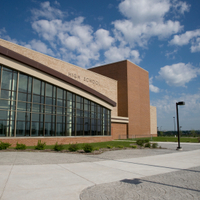Oftentimes, when the three main science courses that students take in high school – Biology, Chemistry, and Physics – are ranked in order of favorite to least favorite, Physics winds up at the bottom of the list. There are a plethora of reasons for this, but one of the big ones is that many students find Physics very difficult to grasp. Struggles in a class can easily lead to negative feelings toward it, so it is not difficult to see why many students try to steer clear if they can.
Despite its notoriety, Physics can actually be an enjoyable and useful class with tons of real-world applications (from improving your golf swing to launching a rocket), and you can get through it relatively painlessly by following these simple tips.
1. Familiarize yourself with key math lessons first
Physics can be taught as both Algebra-based and Calculus-based. No matter which type of Physics you are taking, it is crucial to ensure you have a thorough understanding of the mathematics concepts associated with it. Here are 5 tips for taking better math notes that may help you. Since Physics is essentially the application of mathematical principles to model the world around you, you will need a solid grasp of Algebra and/or Calculus in order to better comprehend the theoretical math and calculations that pop up in Physics problems.
2. Understand concepts before class
There are two parts to Physics: understanding the concepts and applying the concepts to actually solve a problem mathematically. Try to get a conceptual understanding before class, and worry about the math that comes with it once lecture begins. Try to reason your way through the ideas presented in the text. Understand what terms mean, how they relate to each other, and what units are attached to them. Knowing your terms thoroughly will be extremely useful when it comes to actually solving problems, as oftentimes you must substitute formulas into each other to come up with a workable function that includes all the terms you are given. If there are worked examples in the text, look at them, identify all the terms and steps taken to solve, and then rework the examples yourself. This will be the first step in learning to master the problem-solving part of Physics. If you are confused on concepts, terms, or worked examples, make a note and ask in class.
3. Pay attention in class
No matter what class you are taking, this tip is crucial to success. The whole point of being in class is to learn something, so pay attention while you are there! Since you have read the material beforehand, you will have a basic understanding of the concepts and will be able to focus on the application to problems during lecture. Normally your teacher will work some example problems, and if you understand the concepts you should be able to follow along. Take good notes, and when you are confused, ask a question! Here are 3 note-taking formats every student should try. The better you can understand concepts and how to solve problems by the time class ends, the easier you will have it when it comes to doing the homework on your own.
4. Work through a variety of problems
Just like Calculus, correctly working as many Physics problems as you can will put you on the path to success. Practicing your problem-solving skills repeatedly will help you get the hang of the process that you must go through in order to solve problems in Physics. The more types of problems you see and know how to answer, the more you will hone your problem-solving skills. Here are 4 ways to improve your problem-solving skills that you may find useful.
5. Remember the details
Even if you are working the same general type of problem, the details may be different. Are you solving for initial or final velocity? Are your units in cm, m, or km – or do you have to convert from inches? Making sure that you identify all necessary terms, know what term you are going to find from solving the problem, and use correct and compatible units when solving will help you greatly!

